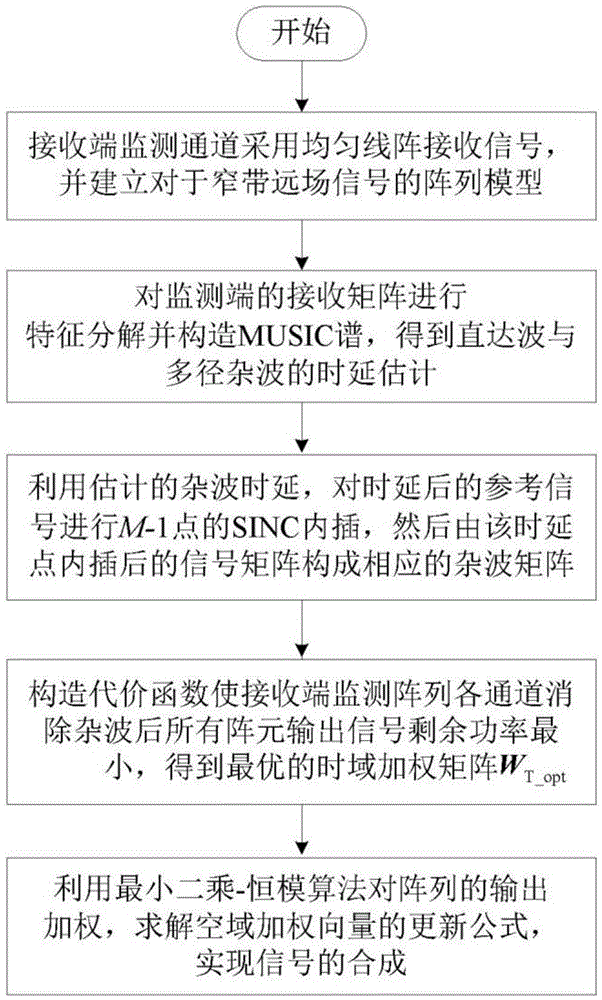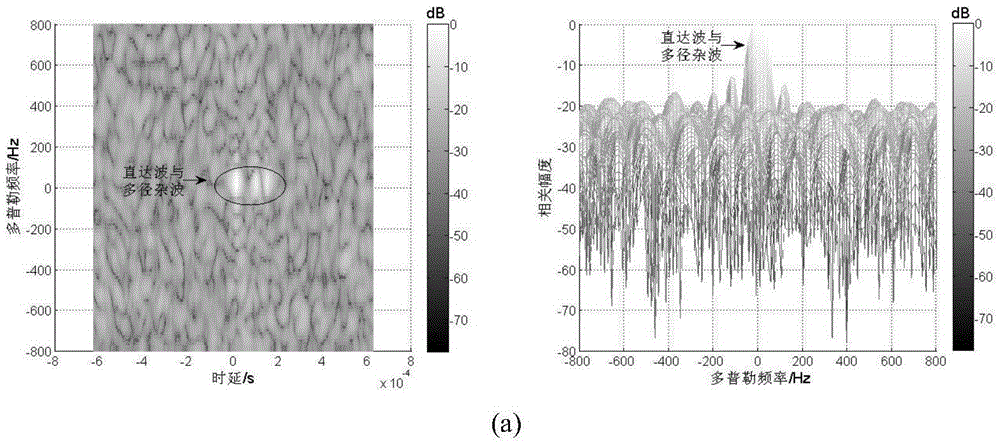Multi-antenna joint optimization clutter suppression method based on fractional time delay estimation
A technology of joint optimization and clutter suppression, applied in radio wave measurement systems, instruments, etc., can solve the problems of not fully mining the information of multi-domain signals, general clutter suppression performance, and limited clutter suppression performance, so as to improve detection. performance, improve detection capabilities, and enhance the effect of detection performance
- Summary
- Abstract
- Description
- Claims
- Application Information
AI Technical Summary
Problems solved by technology
Method used
Image
Examples
Embodiment 1
[0030] Embodiment one, see Figure 1~2 As shown, a multi-antenna joint optimal clutter suppression method based on fractional time delay estimation, specifically includes the following steps:
[0031] Step 1. When passively detecting the target, the monitoring channel of the passive radar receiving end adopts a uniform linear array
[0032] Receive signals and build an array model of narrowband far-field signals;
[0033] Step 2. Carry out eigendecomposition to the autocorrelation matrix of array model matrix, construct MUSIC spectrum, obtain the delay estimation of direct wave and multipath clutter;
[0034] Step 3. Utilize the time delay estimation obtained in step 2, carry out the SINC function interpolation of M-1 point to the reference signal after the time delay, the signal matrix after the interpolation constitutes corresponding clutter matrix;
[0035] Step 4. By constructing a cost function, after eliminating the clutter in each channel of the receiving end monitori...
Embodiment 2
[0037] Embodiment two, see Figure 1~2 , a multi-antenna joint optimal clutter suppression method based on fractional time delay estimation, which specifically includes the following steps:
[0038] Step 1. When passively detecting the target, the monitoring channel of the passive radar receiving end adopts a uniform linear array to receive the signal, and establishes an array model of the narrowband far-field signal. The array model is expressed as: X surv (t)=AS(t)+N surv (t), where A=[α(θ 1 )α(θ 2 )...α(θ D )] is the flow pattern matrix of the L×D dimensional array, L is the number of array elements, and D is the total number of direct waves, multipath clutter and target echoes in the monitoring channel. If a uniform linear array is used, the flow pattern matrix The steering vector of is expressed as: is the position of the array element, θ i is the direction of the signal, λ is the wavelength; S(t)=[s d (t)s mp1 (t)s mp2 (t)...s eco (t)] T is a D×1-dimensional ...
PUM
 Login to View More
Login to View More Abstract
Description
Claims
Application Information
 Login to View More
Login to View More - R&D
- Intellectual Property
- Life Sciences
- Materials
- Tech Scout
- Unparalleled Data Quality
- Higher Quality Content
- 60% Fewer Hallucinations
Browse by: Latest US Patents, China's latest patents, Technical Efficacy Thesaurus, Application Domain, Technology Topic, Popular Technical Reports.
© 2025 PatSnap. All rights reserved.Legal|Privacy policy|Modern Slavery Act Transparency Statement|Sitemap|About US| Contact US: help@patsnap.com



